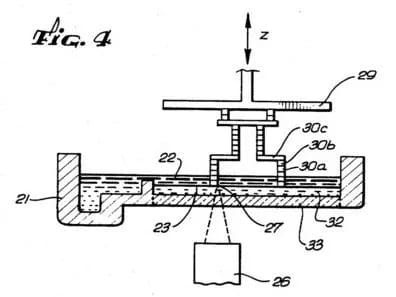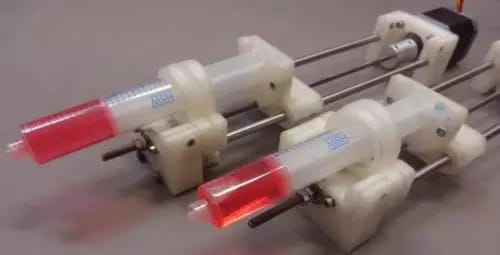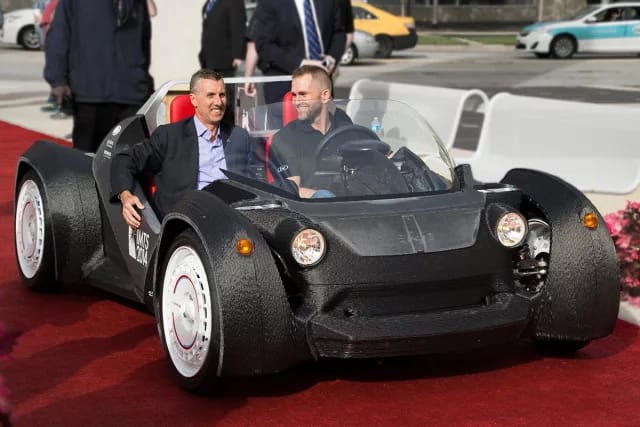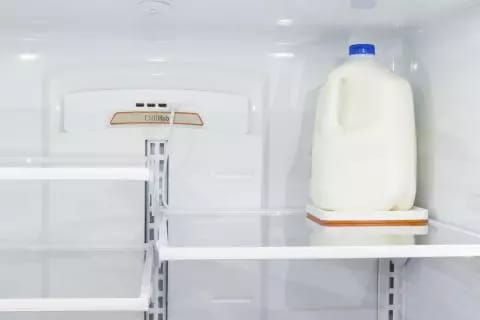
Although it’s possible that patents have existed since the time of the Ancient Greeks, the Venetian Patent Statute is more widely recognized as the first official patent system.
Established in 1474, the statute declared that 10-year patents could be granted to “any new and ingenious device, not previously made.”
Along with all of society’s rules and mores, patent law and intellectual property (IP) have changed over time. We are now living in the post-Internet era, in which ideas and files are exchanged all around the world on a regular basis. It is now possible to download Phil Collins’ entire discography, whether it’s legal or not. It’s also possible to download 3D printable guns, legal or not.
Patent laws were initially written to protect the innovations of inventors against potential infringers; however, now that new models related to IP have been developed, particularly as they have been aided by the open software movement, it may be necessary to reexamine the IP models of the past in relationship to these new models. The example of the modern 3D printing industry may prove to be an important one, given the fact that, after the expiration of key patents related to fused deposition modeling (FDM), the world saw an explosion of low-cost, desktop 3D printers that quickly evolved thanks to the open-source RepRap movement.
To learn more about the open-source movement and traditional IP models as they relate to 3D printing, ENGINEERING.com spoke with a variety of experts. Altogether, their insights may inform those in the 3D printing industry as to whether or not an open-source model is right for them.
The Advantages of IP
While the Environmental Protection Agency, U.S. Department of Agriculture and other means for protecting public safety are under the chopping block of the current presidential administration, the U.S. Patent and Trademark Office (USPTO) is, so far, still at work. The result of the first Patent Act signed by George Washington in 1790, the USPTO has a mission to “maintain[] a permanent, interdisciplinary historical record of all U.S. patent applications in order to fulfill objectives outlined in the United States Constitution.”
Since the signing of the Patent Act, the USPTO has issued over 8 million patents and receives over 485,000 patent applications per year. Whether it’s a new design, process or even plant, the USPTO aims to prevent others within the United States from profiting off of patented work for about 20 years after the date a patent has been filed. Once a patent is granted, however, it’s usually up to the patent holder to defend it, resulting in patent infringement lawsuits.
John F. Hornick is an IP counselor, litigator and partner at Finnegan, Henderson, Farabow, Garrett & Dunner, L.L.P. Hornick is also a 3D printing enthusiast, who speaks and writes about the topic of 3D printing and IP on a regular basis. We asked him for his input on the benefits of IP.
According to Hornick, the closed model of IP protection provides companies with a period of exclusivity, with “the right to prevent others from making, using, selling or importing any device, product or process covered by the patent’s claims, which in the field of 3D printing could be any machine, material, product or process.
“Trade secrets protect anyone’s secret process, or secret sauce,” he added. “Investors demand that companies have IP rights. No IP, no money. IP portfolios also give companies leverage and bargaining power if they are accused of infringing someone else’s IP rights, and they can also license their patents for a revenue stream.”
Despite these benefits, Hornick has witnessed a growing anti-IP sentiment. “IP rights are being disrupted from within, and they are unpopular in some circles. We are going through an unprecedented period of anti-IP sentiment. As the result of important court decisions, patents are being invalidated right and left, or are never granted in the first place,” Hornick said.
While there is pushback to the existing IP model, Hornick does not “see open platforms substantially disrupting IP anytime soon.” That doesn’t mean that businesses aren’t pursuing open platforms, but he argues that businesses that pursue such platforms will derive their profits in ways that don’t rely on IP rights.
Going Open Source
Obviously, then, a company’s decision to pursue an open-source philosophy usually isn’t derived from financial motivation, though there may be financial benefits that will be discussed later. An open proponent of open-source hardware and software in the 3D printing community is Joshua Pearce, associate professor of Materials Science and Engineering and associate professor of Electrical and Computer Engineering at Michigan Technological University.
At the Pearce Research Group, Michigan Tech’s Open Sustainability Technology Lab, he and his students explore a wide range of topics related to sustainability and open-source 3D printing. Pearce has published numerous studies indicating that, not only can open-source hardware increase innovation, but it can also reduce costs.
“[With open-source platforms,] it is just easier, less expensive and faster to innovate,” Pearce explained to ENGINEERING.com. “You are free to start innovating off of the best of what is already available instead of what you may be able to license in the proprietary world. You can borrow the best work of others without any legal concerns, and all you are obligated to do is share your work back with the global community under a compatible license. If you are fortunate, your project will become popular in the open-source community, which will provide you with a global engineering team constantly building upon and improving your project for free.”

Pearce has provided numerous examples of the benefits of open-source 3D printing. In his latest study, Pearce and his student, Emily Petersen, demonstrated that, by 3D printing a number of household items at a rate of one per week, a 3D printer could pay for itself in six months. Over the course of five years, they estimated that $12,000 could potentially be saved by printing rather than purchasing these goods. And those are home goods. In another study, he and his team were able to calculate that 3D printing open-source lab equipment, such as a syringe pump, could result in savings of upwards of $800 million.
“There is no question that at this point IP laws hinder innovation,” Pearce said. “Patents essentially create friction at every step of the innovation cycle, increasing costs and wasting time. In some cases, entire fields have been held captive for 20 years by patents. For example, 3D printing is actually a pretty old technology, but it did not really start to take off until the open-source RepRap (self-replicating rapid prototyper) 3D printer was created after the overly broad patent on all fused filament printing expired. If we want to improve innovation, IP needs to be significantly weakened, and there is an easy case to make for that—as the costs of innovation have dropped with improvements in technology, there is no reason for such repressively long monopolies.”
The issue for Pearce isn’t as crucial when it comes to more trivial details of a consumer product, such as the “rounded corners of the iPhone.” He explained, “[W]here this becomes tragic is when IP interferes with technologies we need like medicine or renewable energy. For example, IP laws enabled the absurd and unethical behavior of the patent holders of the EpiPen.”
Pearce’s views about IP laws, which he has written about more extensively in Nature, obviously go beyond the realm of 3D printing. Pearce also has a background in solar and nanotechnology. He pointed out that there is not yet a solar cell on the market that relies on all of the innovations that have occurred in the solar industry in order to improve overall efficiency. This is due to the fact that it is prohibitively costly to license every subtechnology in order to create a better solar cell. For this reason, he advocates the move to the open-source development of technologies “that actually matter,” such as solar cells.
Bridging the Gap with Co-Creation
It’s nearly impossible to count the number of companies that are still relying on existing IP models, but new start-ups and even established corporations are venturing into the world of open source. Some important examples include GE, Autodesk and Local Motors, which have found unique methods for opening up to the public.

Local Motors is an open-source auto company, most famous for its work 3D printing entire car chassis using Cincinnati Incorporated’s Big Area Additive Manufacturing (BAAM) platform. It’s not really feasible for members of Local Motors’ co-create community to actually 3D print their own cars, but Local Motors doesn’t exactly expect them to.
Instead, the company relies on its community to develop its vehicles, often through open competitions. As a result, all of Local Motors’ cars have been designed, in concept, by the firm’s community. “Folks don’t build their own Local Motors vehicles, but they do contribute to design and engineering challenges that we host to help us with our next project. Open sourcing has helped Local Motors innovate more quickly and develop a larger scope of ideas than would be possible. We are able to solve tougher challenges and with a wider range of ideas than if we weren’t open,” Jacqueline Keidel, Public Relations manager for Local Motors, explained.
In addition to opening Local Motors up to new ideas, this approach is meant to allow the co-creation community to provide feedback about products that might go to market. When a winner of a Local Motors design challenge is chosen, they get substantially more than the chance to provide input. With some competitions, competition winners may earn a single lump sum and, in the case where a vehicle is commercialized, they will receive royalties with each sale.
Inspired by Local Motors’ co-creation model, GE Appliances formed FirstBuild. Located on the University of Louisville campus, FirstBuild invites makers to learn about and design new products. Similar to Local Motors, FirstBuild hosts competitions to design new appliances, such as the IoT-connected Milky Weigh, a device that measures the weight of milk in the user’s fridge to let them know whether or not they need to purchase more milk while grocery shopping.

Lawrence Portaro, director of FirstBuild and previously the Engineering Manager for Cooking Products at GE, discussed the community’s openness to the surrounding community, whether online or at the physical site in Kentucky.
“We engage the community about what they’d like to see in terms of solutions for the home,” Portaro said. “We have a co-creation area where we reach out to folks and see what they would like to see, what the next cool thing is that they’d like to do and what kind of problems they would like to solve. As we work on the products, we’re very open. There’s no barrier for entry. You come in and join us in the creation of new products.”
When a community member has an idea for a product that they’d like to work on, they can work with experts at FirstBuild to turn those ideas into a reality. “We’re very aware and very respectful of people’s intellectual property. People are always credited with their ideas,” Portaro explained. “You can continue to work with me [on your idea] or you can go off and, if you chose to work with someone else, the IP is still yours.”
For those who win design competitions, they may receive a lump sum. However, in some cases, a community member might be very engaged in the design process of a product. As GE Appliances contributes its expertise to commercialize and sell the product, the designer will still receive credit and royalties for the product.
The reason for this split is that, though the community member may have developed the product, GE Appliances uses its domain knowledge, and puts in the capital and the labor to bring the product to market. “[I]f you think about it,” Portaro said, “if we vet out the idea and then create something manufacturable, safe and cost-effective, we need to be able to have a business model that allows us to benefit from the effort that we put in.”
Portaro pointed out that GE regularly opens up the API for its software, allowing developers to create software solutions for GE products, but noted that hardware is a different story. While source code must be made public for others to work with it, hardware is tangible and can be physically understood more easily. Interestingly, Autodesk tried a different approach and actually made its hardware open source with the release of the Ember 3D printer.
Read more at ENGINEERING.com

